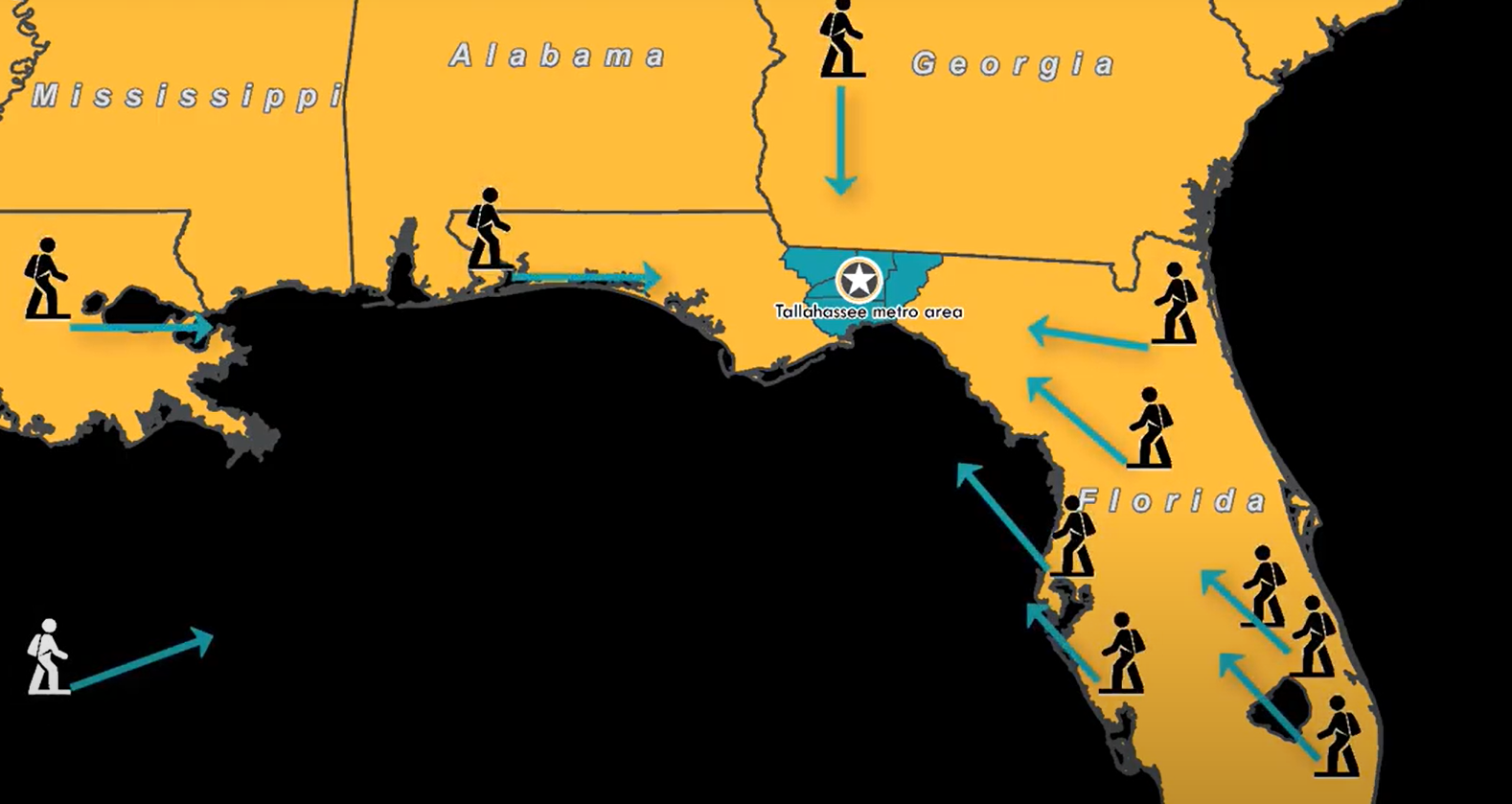Small businesses are more than the storefronts and services that shape the daily experiences of residents across Tallahassee-Leon County; they are a critical foundation of our regional economy. Each year, OEV’s Love Your Local campaign highlights the essential role these businesses play and encourages our community to recognize the value of supporting locally owned enterprises. […]
DataTALKS Explained: Tallahassee-Leon County Graduate Retention
Dan Lucas, Division Coordinator
Tallahassee’s universities have a constant flow of incoming students and outgoing graduates. Florida State University and Florida A&M University together account for around 80% of the 65,000 students enrolled in higher education in Leon County. According to data from the Board of Governors of the State University System of Florida, about 13% of incoming FSU and FAMU students typically are from the Tallahassee metro area (Leon County, 12%; Gadsden, Jefferson, Wakulla counties, 1%), 68% are from another Florida county outside our metro area, 13% come from another US state, and around 6% are from outside the US.
What do people mean exactly when they talk about “Graduate Retention”? Does it only apply to those who stay in town after graduation, for whatever reason? How long does a graduate need to stay after graduation to qualify as “retained”?
Data from the Florida Department of Education’s Florida Education Training and Placement Information Program (FETPIP) helps inform what’s going on with recent graduates. Established pursuant to §1008.39, F.S., FETPIP helps State universities review academic programs for performance-based budgeting and federal/state accountability by collecting the employment and institutional records of recent graduates. The information collected by FETPIP is not a survey response, but cohort tracking limited to graduates employed within Florida (excluding self-employed, very small employers, and federal employees), which yields higher quality data than surveys while protecting individual privacy.

Each academic year, FETPIP records indicate around 13,000 students complete degrees at FSU and FAMU. By the next fall after graduation, on average around 15% of them are found employed in Leon County, with 11-12% full-time employed. The proportion of outgoing graduates found full-time employment in Leon County the following year is about the same as the proportion of incoming university students from Leon County—about 12%.
Higher education enrollment is driven by State, national, and international recruitment rather than by local labor market needs. The number of graduates, and the skills they graduate with, may not necessarily match the needs of Tallahassee’s labor market. The Tallahassee metro area attracts most of its university students from all over the state, country, and world, and after several years, exports most of those graduates back to the Florida, US, and international labor markets. The 12% retention equilibrium for Leon County is a swirling eddy in this steady flow of students. It generates continuous renewal of the local workforce and has been consistent with the tempo of growth in the local labor force and employment.
For more information on student retention in Tallahassee-Leon County, check out the DataTALKS video on the OEV’s YouTube: https://youtu.be/wbSB-ODbNY4.